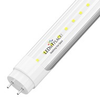If you are in the market for LED lights, you might have come across the term "lumens." Lumens are a unit of measurement used to quantify the brightness of light produced by a bulb. Understanding lumens is essential when choosing LED lights for your home or office. In this article, we will explain what lumens are and how many you need for different lighting applications.
Table of Contents
|
1. What are Lumens?
Lumens measure the total amount of light produced by a bulb. It is a more accurate measure of brightness compared to watts, which measure the amount of energy consumed by a bulb. The higher the number of lumens, the brighter the light produced by the bulb.
2. Why are Lumens Important for LED Lights?
LED lights are more energy-efficient compared to traditional incandescent bulbs. They produce the same amount of light with lower wattage, making them more cost-effective in the long run. However, LED bulbs come in different brightness levels, and lumens help you determine the brightness level you need.
3. How to Calculate Lumens?
You can calculate lumens by multiplying the light output (in lux) by the area (in square meters) the light covers. However, this method is cumbersome, and it is easier to check the lumens rating on the packaging or online.
For example, let's say you have an LED light with a luminous efficacy of 100 lm/W and a power consumption of 10 watts. The calculation would be:
100 lm/W x 10 watts = 1000 lumens
So this LED light would emit a total of 1000 lumens of visible light.
4. How Many Lumens Do I Need for Different Applications?
The number of lumens you need depends on the application. Here are the recommended lumens for different lighting applications:
4.1 General Lighting
General lighting provides overall illumination to a room. The recommended lumens for general lighting are:
- Living room: 1,500-3,000 lumens
- Bedroom: 1,000-2,000 lumens
- Kitchen: 3,000-4,000 lumens
- Bathroom: 4,000-5,000 lumens
4.2 Task Lighting
Task lighting provides focused illumination for specific tasks, such as reading, writing, or cooking. The recommended lumens for task lighting are:
- Reading: 400-1,000 lumens
- Writing: 400-1,000 lumens
- Cooking: 4,000-5,000 lumens
4.3 Accent Lighting
Accent lighting highlights specific features or areas of a room, such as artwork or architectural details. The recommended lumens for accent lighting are:
- Artwork: 1,000-1,500 lumens
- Architectural details: 1,500-2,500 lumens
5. Factors that Affect Lumens Requirements
The number of lumens you need can vary depending on several factors, including:
- Ceiling height: Higher ceilings require more lumens to provide adequate illumination.
- Room size: Larger rooms require more lumens to provide even illumination.
- Color of walls and ceilings: Dark walls and ceilings absorb more light, requiring more lumens to provide adequate illumination.
6. Conclusion
Understanding lumens is crucial when choosing LED lights for your home or office. By knowing the recommended lumens for different applications and the factors that affect lumens requirements, you can choose the right LED lights to provide adequate illumination for your specific needs. Don't forget to check the lumens rating on the packaging or online before purchasing LED lights.
7. FAQs
- What is the difference between lumens and watts?
- Lumens measure the brightness of a bulb, while watts measure the amount of energy consumed by a bulb.
- How many lumens do I need for outdoor lighting?
- Outdoor lighting depends on the purpose of the lighting. Security lighting requires more lumens than ambient lighting. Generally, 700-1,300 lumens are enough for ambient lighting, while 2,000-4,000 lumens are suitable for security lighting.
- Can I use lumens to compare the brightness of LED and traditional incandescent bulbs?
- Yes, you can use lumens to compare the brightness of LED and traditional incandescent bulbs.
- Can I dim LED lights with high lumens?
- Yes, you can dim LED lights with high lumens. However, make sure the LED lights are compatible with dimmer switches.
- How long do LED lights last?
- LED lights can last up to 50,000 hours, depending on the quality of the bulb.

















































































